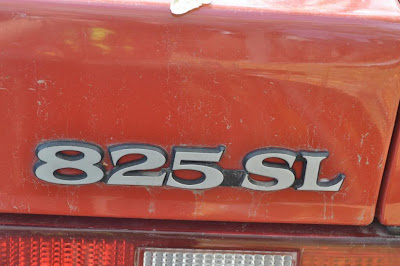







As I've said on numerous occasions, Boise, Idaho is one of the coolest places I've been when it comes to finding old vehicles still being used daily. The lack of salt, and overly dry year-round climate make this city on of the better places to find old cars in decent shape. Since Boise isn't a trendy city, big-city fads like donkriding and minitrucking haven't made a tremendous impact on the car culture there. The result? Many, many rare cars and trucks scattered about the city like diamonds in a field. A good portion of the vehicle I saw whilst there were of the GM variety, so not many "street sightings were had. Since I am a sucker for old Japanese trucks, I went gaga when this thing caught my lens.
What is this, you ask? Well, the title says Mazda REPU. Let me explain. Before the Ford-Mazda joint venture Courier/B-Series, Mazda had their own compact truck. Like the B-Series that came after it, this little pickup did battle with Toyota and Datsun as well. Unlike the truck that replaced it, however, this little guy did without pistons. Rather than being simply a four letter catchy name, REPU actually tells the buyer, and enthusiast/onlooker what they're looking at-- a rotary engined pickup.
Powered by the same 13B found in the much-loved RX7 sports car, this classic minitruck was the world's first--and only-- rotary powered pickup truck. Made from 1974 to 1977, just 15,000 were speculated to have been built--actual production figures are unknown. Unlike its piston-powered competitors, the rotary drank gas at the same rate as a contemporary fullsize car. Toyota's SR-5 achieved 27 MPG on the highway, the Datsun got a decent 24 MPG on the highway, and the REPU? It's official EPA rating was 14 City and 19 Highway. Not too terrible by today's standards until you remember how small these trucks really were. Since Japanese vehicles had much higher tendency to rust out, most of the surviving trucks are in the Western part of the US. Fitting, since I saw this exmaple in Idaho.










































